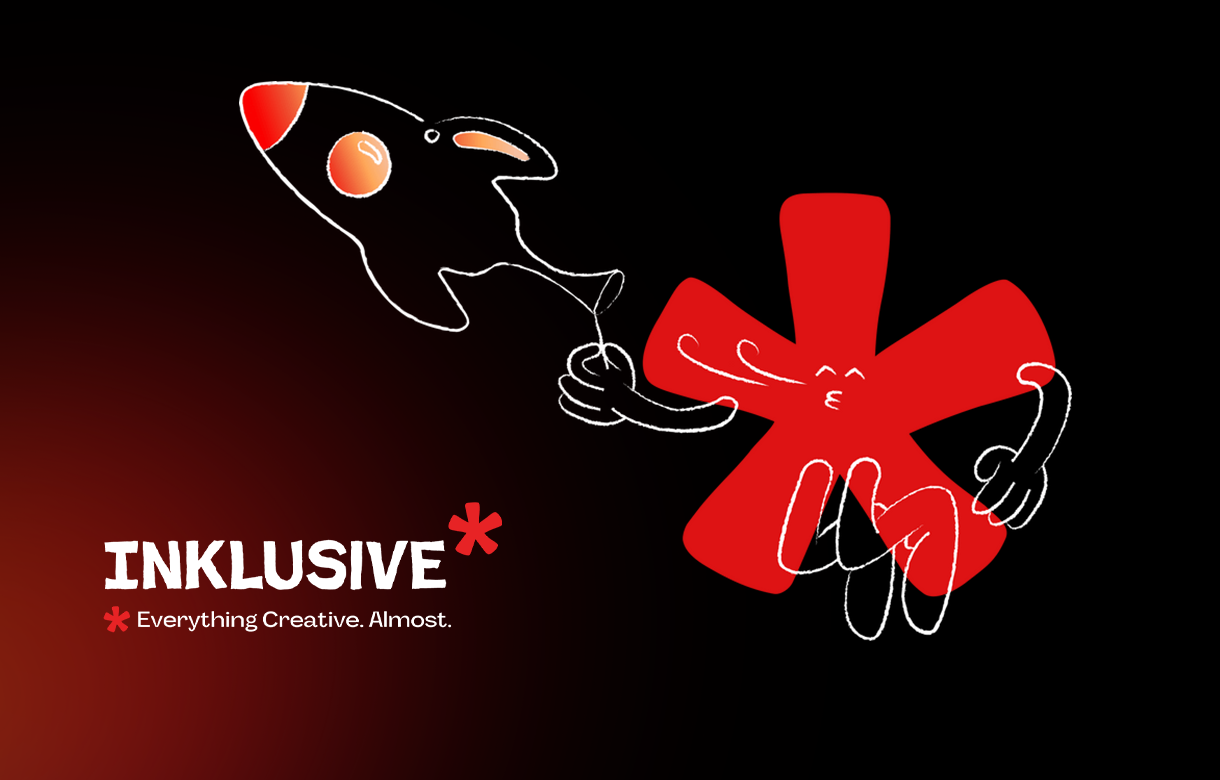It’s Monday morning.
You walk into the boardroom, your deck is loaded on the screen, and you’re ready to pitch.
You’ve prepared the slides meticulously, stuffed with every possible detail your team could think of—features, benefits, statistics, case studies.
But… Here's the catch!
Halfway through your presentation, you notice the blank stares. (Panic Creeping in)
The eyes of your potential stakeholders glaze over, and by the time you wrap up, there’s no excitement, no enthusiasm, and definitely NO DEAL!
It’s frustrating, right?
I’ve seen it countless times, and as a sales manager, you’ve likely experienced it too. You’ve put in hours of effort into these decks, only to leave the room wondering what went wrong.
Well, let’s talk about why your presentations might be failing and, more importantly, how you can fix them—once and for all.
Problem #1: Information Overload – Too Much, Too Soon

Here’s a harsh truth: Your stakeholders don’t care about every single feature of your product or service, at least not at the beginning.
One of the most common mistakes I see in sales presentations is information overload. You’re cramming every possible detail into your deck, thinking that the more you provide, the better informed your audience will be.
But guess what?
It has the opposite effect.
When you bombard your audience with information, especially when they’re not ready for it, you’re losing their attention. Psychologically, our brains can only process so much data at once, and when people are faced with too much, they tune out.
A Harvard Business Review study revealed that decision-makers only retain about 10% of the information presented to them during pitches. Ten percent!
So, if your deck is 30 slides long, they’ll probably only remember three—if that.
The Fix: Simplify, Prioritize, and Focus on the Client’s Pain Points
Sales is about solving problems, not listing features.
Instead of overwhelming your audience with every single aspect of your product, focus on the problems your product solves for them.
Prioritize the client’s pain points and lead with solutions.
Simplify your deck to highlight the core value propositions.
You can always dive into the details if they ask, but make sure your primary message is clear and tailored to their specific challenges.
Imagine this: Instead of a 25-slide behemoth, you present a lean, 10-slide deck that directly addresses how your solution can save the client time, money, or resources.
Now, PowerPoint’s Designer feature can be your best friend here. You don’t have to spend hours manually tweaking every slide.
Let Designer automatically suggest clean, streamlined layouts that are visually appealing without being overwhelming.
Suddenly, you’re speaking their language. Your audience is engaged, asking questions, and envisioning how your product fits into their world. Less is more when it comes to sales presentations, and focusing on impact over information is how you turn curiosity into commitment. (That’s where the real magic happens!)
Problem #2: Lack of Personalization – One Size Does NOT Fit All

We’ve all been guilty of this at some point: you’ve got a great template, a deck that’s worked for other stakeholders, so why not reuse it?
After all, it’s efficient, right?
Well, NOT really.
One of the most significant mistakes sales managers make is assuming that a one-size-fits-all deck will resonate with every stakeholder.
But here’s the thing—each client is unique, with their own goals, challenges, and business environments.
The Fix: Tailor Your Presentation to the Stakeholder’s Specific Needs
Take the time to personalize your presentation. That means researching your client beforehand and understanding their specific pain points.
What are their industry challenges?
What are their competitors doing?
Where does your product or service fit into their long-term strategy?
Here’s a trick: PowerPoint’s SLIDE ZOOM feature can help make personalization seamless. Instead of flipping through slides and losing your audience’s attention, use ZOOM to jump to key sections that matter most to your stakeholder.
For example, if you know your stakeholder is more concerned with pricing, you can “ZOOM” directly into that section, creating a dynamic and engaging flow to your presentation.
Tailor the deck to their needs, and it feels less like a canned pitch and more like a conversation about solving their problems.
A Forrester study found that 77% of B2B buyers say their latest purchase was complex, and they needed more information to help them make a decision. Personalizing your pitch to answer their specific concerns can dramatically increase your chances of winning the deal.
Think about it this way: Would you respond better to a generic presentation about “some solution” or one that specifically outlines how that solution will save your company money, improve workflow, and eliminate the pain points you face daily?
Personalization is not just a nice-to-have—it’s critical to closing deals.
Problem #3: No Story, No Emotion – Where’s the Human Connection?
Let’s face it: Facts and figures are important, but they’re not what people remember. What sticks with them are stories.

Sales managers often focus too much on data—cost savings, ROI, technical specs—without telling the emotional story behind why their product matters.
But here’s the thing: people buy based on emotion and justify it with logic. If your presentation is all facts and no heart, you’re missing a huge opportunity to connect with your audience.
The Fix: Lead with a Story That Resonates
Stories engage our brains in ways that numbers can’t.
They create empathy, connection, and understanding.
Start your presentation with a real-life example of a client who faced the same challenges your prospect is dealing with, and show how your solution changed their situation. This not only builds credibility but also shows that you understand your client’s world.
For instance, instead of launching into a dry explanation of your product, begin with a story about a similar company that was struggling with inefficiency and how your product turned things around for them.
Suddenly, your client isn’t just hearing about your product; they’re seeing themselves in the story, imagining how you could solve their problems.
Want to make that story even more compelling?
Use PowerPoint’s Morph Transition to smoothly transform one slide into the next, visually guiding your audience through the story. A well-timed morph, especially when shifting from the “problem” to the “solution” slide, creates a sense of fluidity and keeps your audience visually and emotionally engaged.
A Stanford University study found that people are 22 times more likely to remember a fact when it’s wrapped in a story. So, if you want your audience to remember your pitch long after the meeting ends, give them a narrative they can hold onto.
Problem #4: Lack of Visual Appeal – Death by PowerPoint
We’ve all been there—slide after slide of dense text, tiny fonts, and overly complicated charts. It’s enough to make anyone’s eyes glaze over.
Visual appeal matters more than most people think (yet, it’s often overlooked).
In fact, poor design can make your presentation seem outdated, unprofessional, and even unreliable.
The Fix: Clean, Visual, and Impactful Presentations
Great design isn’t just about aesthetics; it’s about communicating your message more clearly.
When done right, visuals can support your narrative and make it easier for your audience to digest complex information.
When done wrong, they distract from your message and confuse your audience.
Instead of cramming everything onto one slide, use clean, minimalistic designs that highlight the most important points.
SmartArt is a quick and easy feature in PowerPoint that allows you to transform boring bullet points into visually appealing graphics. Use charts, infographics, and icons to replace walls of text. This way, you’re telling your story through visuals, not words.
Let’s face it: a well-designed chart will convey growth projections far better than a block of text explaining the same numbers. PowerPoint’s Icons feature is particularly useful for emphasizing key points without overcrowding your slides.
According to 3M, visuals are processed 60,000 times faster than text, meaning a simple, well-placed visual can do more to drive your point home than a wall of words ever could. So, ditch the dense slides and focus on creating a visual story that enhances your message.
Problem #5: Not Engaging Your Audience – The Silent Killer
Have you ever noticed that your audience tends to go quiet during a presentation?
Maybe they stop asking questions, or worse, they start checking their phones. This lack of engagement is a silent killer in sales presentations.
If your audience isn’t interacting, it means they’re not invested—and that’s a problem.
The Fix: Make Your Presentation a Conversation
Your presentation shouldn’t be a one-way lecture. It needs to be a two-way conversation where your client feels involved and engaged.
Encourage questions, ask for feedback, and don’t be afraid to deviate from the script if it means addressing a client’s specific concern.
How to use Live Presentations in Microsoft PowerPoint
PowerPoint has a feature called Live Presentations that allows your audience to follow along on their own devices, ask questions in real-time, and give feedback on specific slides.
By using Live Presentations, you can encourage real-time interaction, ensuring your audience stays engaged and invested throughout the entire pitch.
The more your audience participates, the more they feel like they’re part of the solution.
And here’s another pro tip: anticipate objections. Chances are, your client will have concerns or hesitations. Address them head-on during your presentation.
Not only does this demonstrate confidence in your product, but it also shows that you’ve done your homework and are prepared to solve their problems.
Why Sales Managers Should Turn to an Presentation Design Agency
Now, here’s the reality: as a sales manager, your strength lies in strategy, not necessarily in presentation design.
You know how to sell, but building a presentation that is visually stunning, emotionally engaging, and tailor-made for each client?
That’s where a Presentation Design Agency comes into play.
Working with a professional agency ensures that your deck isn’t just another PowerPoint presentation—it’s a finely-tuned sales tool.
Agencies with expertise in presentation design, like INK PPT, bring a fresh perspective. We help transform your ideas into a visual narrative that not only grabs attention but also drives results.
You know what your stakeholders need.
We know how to deliver that message in a way that resonates on every level—visually, emotionally, and logically.
By partnering with INK PPT who specialize in creating impactful presentations, you’re free to focus on what you do best: SELLING.
Fix Your Decks, Close More Deals
At the end of the day, your sales deck isn’t just a presentation—it’s a reflection of your product, your brand, and your ability to solve your client’s problems.
If your decks aren’t closing deals, it’s time to take a hard look at what’s not working and implement the changes that will make your presentations more impactful.
Simplify your message.
Personalize your pitch.
Tell a story.
Design for clarity.
And above all, Engage your audience.
With these strategies in place, you’ll stop hearing “Let me think about it” and start hearing, “When can we sign?”
What’s been your biggest challenge in closing deals with your sales presentations?











.jpg)
.jpg)

.png)

.png)

.jpg)







%20(1).jpg)






%20(1).png)